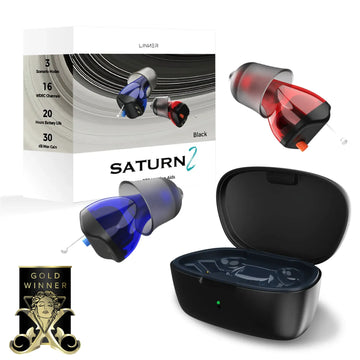Hearing is one of our most essential senses, allowing us to engage with the world through speech, music, and ambient sound. However, millions worldwide face the reality of hearing loss.
According to the WHO, more than 430 million people, including 34 million children, currently need rehabilitation for hearing loss. This number is expected to rise to over 700 million by 2050. The condition becomes more common with age, affecting more than 25% of those over 60.
With such staggering figures, the question becomes increasingly urgent: can hearing loss be reversed?
In this article, we explore cutting-edge medical advancements offering hope in the quest to restore hearing.
Regenerative Therapies for Inner Ear Hair Cells
The tiny sensory hair cells within the cochlea are crucial for hearing, converting sound vibrations into electrical signals for the brain. Unfortunately, these cells don't naturally regenerate after damage from aging, noise, or toxins, leading to permanent hearing loss.
Regenerative medicine aims to reverse this by restoring these vital cells. Approaches include stem cell therapy, where researchers work to transplant or stimulate stem cells to become new hair cells. Additionally, gene editing and targeting molecular pathways can prompt existing supporting cells to transform into functional hair cells, as shown in animal studies.
In a major advancement, researchers at the University of Sheffield are launching the first human trial for regenerative cell therapy in treating sensorineural hearing loss. The randomized, open-label trial will be conducted at three top hearing research centers in the UK and involve 20 cochlear implant patients.
Rincell-1, the therapeutic agent, will be delivered during surgery using a minimally invasive technique. The trial will assess safety, neural health, speech perception, and patient-reported outcomes, marking a potential turning point in hearing restoration.
Gene Therapy Advances
Gene therapy is emerging as a powerful tool to address hearing loss caused by genetic mutations, particularly in congenital and early-onset cases. By delivering functional copies of faulty genes directly into the inner ear, gene therapy offers the possibility of restoring hearing or halting its decline.
Recent studies highlight the global effort in genomics-driven research aimed at identifying and correcting these genetic abnormalities.
Engineered viral vectors, often used as delivery vehicles, transport therapeutic genes to target cells, replacing or silencing defective genes. In animal models, these techniques have already demonstrated restored auditory function, laying the groundwork for early-phase human trials.
Researchers use screening approaches and next-generation sequencing technologies to pinpoint shared mutations among individuals with hearing loss. These advances mark a move toward personalized auditory care and boost hopes for gene therapy as a near-future treatment.
Cochlear Implants and Neural Stimulation Upgrades
Cochlear implants have revolutionized life for those with profound hearing loss, effectively bypassing damaged inner ear structures to directly stimulate the auditory nerve. These devices work by using a sound processor behind the ear to capture sounds, which are then sent to an under-skin receiver.
This receiver transmits signals via a thin wire with tiny electrodes, triggering the auditory nerve to send sound signals to the brain. While these sounds aren't identical to natural hearing, users typically make significant gains in speech understanding within three to six months of use.
Now, advancements are making these implants even smarter and more adaptive. Next-generation devices integrate artificial intelligence (AI) to automatically adjust to diverse sound environments, greatly enhancing speech clarity and user comfort.
Furthermore, researchers are developing innovative brain-auditory interface devices and refined electrical stimulation techniques. These aim to retrain the auditory nerve and improve the brain's sound processing, potentially boosting outcomes even in challenging cases.
Immunotherapy and Protein Targeting in Hearing Research
Emerging research underscores the immune system’s critical role in various forms of hearing loss, particularly autoimmune inner ear disease. In these cases, inflammation and immune-mediated damage contribute significantly to auditory decline, opening new doors for targeted therapies. Immunotherapy is gaining traction as a promising avenue to not only manage symptoms but also intervene in the disease process itself.
At the heart of this innovation are antibody discovery services, which utilize advanced screening platforms to identify monoclonal antibodies. These are highly specific proteins that can bind to and neutralize molecules responsible for inflammation or damage in the inner ear.
By targeting key immune-related proteins, these antibodies can protect delicate hair cells, inhibit harmful autoantibodies, and support regeneration.
According to Alloy Therapeutics, efforts to create therapeutic antibodies with precise properties for auditory health are advancing rapidly. This approach emphasizes the accurate generation, isolation, and evaluation of antibodies tailored to the unique challenges of hearing-related immune conditions. These precision therapies hold promise to redefine the future of immune-based hearing loss treatment.
Drug Development and Delivery Innovations
Pharmaceutical innovation is rapidly advancing the development of drugs aimed at preserving or regenerating auditory hair cells. One major hurdle in this area is the difficulty of delivering medications directly to the inner ear. This region is protected by the blood-labyrinth barrier that blocks many drugs.
According to Frontiers, traditional oral or intravascular routes often result in poor bioavailability, making localized delivery more desirable. However, such approaches are also limited by the need for invasive procedures.
To overcome these challenges, researchers are developing novel drug delivery systems such as hydrogel-based slow-release formulations, nanoparticles, and targeted intra-ear injection methods. These strategies improve precision while minimizing systemic side effects.
Controlled release therapeutics and innovative devices like microfluidic systems and cochlear prosthesis-mediated delivery are also showing promise in clinical trials. Collectively, these advances are expanding the therapeutic toolbox for sensorineural hearing loss and related conditions.
Frequently Asked Questions (FAQs)
What is the difference between a hearing aid and a cochlear implant?
A hearing aid amplifies sound and is best for mild to moderate hearing loss, relying on the ear’s natural structures. A cochlear implant works by skipping over the damaged portions of the inner ear. It directly stimulates the auditory nerve, making it suitable for severe to profound hearing loss when hearing aids are no longer effective.
Can hearing loss from medication be reversed?
Hearing loss from medication, known as ototoxicity, is often irreversible, especially if damage to the inner ear hair cells is severe. However, early detection and discontinuation of the drug may prevent further damage. Emerging treatments like antioxidants, gene therapy, and regenerative approaches show potential for partial recovery in some cases.
Is there a surgery to reverse hearing loss?
Yes, certain surgeries can help reverse specific types of hearing loss. Procedures like stapedectomy for otosclerosis or tympanoplasty for eardrum repair can restore hearing in conductive loss cases. However, for sensorineural hearing loss, surgery like cochlear implantation restores hearing function but doesn’t reverse the underlying nerve damage.
While the complete reversal of all types of hearing loss is not yet possible, the landscape of auditory medicine is rapidly evolving. Emerging therapies that harness genetics, regenerative biology, immune system modulation, and cutting-edge biotechnology offer a hopeful horizon.
Behind many of these advances, platforms like antibody discovery services are essential tools enabling the development of precise, personalized treatments. With continued research, the prospect of restoring hearing is becoming increasingly attainable, promising to transform lives by returning the vital gift of sound.



![Linner Mercury Clarity OTC Hearing Aids [FSA & HSA Eligible] Linner](http://www.linnerlife.com/cdn/shop/files/Linner-Mercury-Clarity-OTC-Hearing-Aids-_FSA-_-HSA-Eligible_-Linner-110038953.webp?v=1725853434&width=360)

